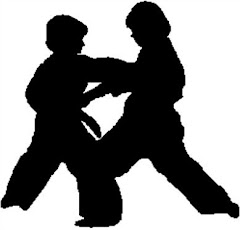
Origins Of Karate And Key Benefits For The Practitioner
Karate is the traditional discipline of weaponless self-protection; it literally means " The way of the empty hands". Traditional Karate employs mental concentration and rigorous training to build up physical aptitudes like speed, force, and nimbleness. Training the spirit and body conjointly leads to multiplied benefits unlike humdrum drill routines observed in most fitness gymnasiums.
Physical fitness and Overall wellness: Karate practice ameliorates flexibility, force, coordination, and endurance of the practicioner. Karate's punches, thrust, kicks, blocks, sweeps and throws workout the entire body in an explosive and active fashion.
Stress relief: besides the stress reducing advantages of any physical exercise, Karate also betters assiduity and cognizance of mental attitudes that can induce tension.
Self-assurance: though all physical exercises ameliorate feelings of wellbeing, classical Karate puts particular emphasis on building persona, and centers on increasing assurance, awareness, and persistence through repetitive physical and mental drills.
Self-protection: Traditional Karate is the finest martial art for self-protection as it revolves around genuine defense skills instead of sport oriented methods that are found to be impractical and ineffective in real combat situations.
Physical advantages include:
Cardiovascular Exercise
Coordination
Flexibility
Pragmatic self-protection Techniques
Stress Reduction
Aerobic and Anaerobic exercise
Grow faster Reflexes
Plyometric Explosiveness
Mental benefits include: discipline, persistence, humbleness, responsibility, self-respect, assurance, awareness and perspicacity.
What Is Karate?
"Real karate is this: that in day-to-day life one's spirit and body be conditioned and trained in a spirit of humbleness, and that in decisive times, one be committed completely to the cause of justice." --Gichin Funakoshi
Karate can as well be identified as a martial art, or combat method, calling for a mixture of techniques, including blocks, strikes, escapes, throws, and joint manipulations. Karate training is fractioned into three aspects: kihon (basics), kata (forms), and kumite (sparring).
The word karate is a mix of two Japanese characters: kara, signifying empty, and te, signifying hand; thus, karate translates into "empty hand." Appending the suffix "-do" (sounded out "doe"), signifying "way," i.e., karate-do, connotes karate as a complete way of life that goes well beyond the self-protection applications. In traditional karate-do, we always keep in mind that the real adversary is oneself.
Shotokan founder Gichin Funakoshi has said that "spirit and know-how become one in real karate." We endeavor to make our physical techniques perfect reflexions of our mind's intent, and to better our mind's concentration by realizing the essence of the physical techniques. By fine-tuning our karate practice we are fine-tuning our own mind or our own mental capacity. For instance, doing away with feeble and indecisive moves in our karate aids to get rid of weakness and indecisiveness in our minds--and the other way around.
It is in that sense that karate turns into a way of life, as we strive to become very strong but joyful and law-abiding people. As Tsutomu Ohshima, chief teacher or shihan of Shotokan Karate of America, has put it, "We have to be strong enough to convey our true spirit to any adversary, anytime, in any condition. We have to be calm enough to behave ourselves with humility."


No comments:
Post a Comment